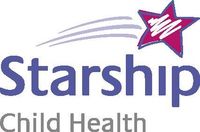Level One
Starship Hospital
Grafton
Auckland 1023

Starship Paediatric Radiology

Street Address
Postal Address
Department of Paediatric Radiology
Starship Children's Health
Private Bag 92 024
Auckland Mail Centre
Auckland 1142
New Zealand
Contact Details
Phone (09) 307 2836 - Reception
Gastrointestinal Radiology (imaging the oesophagus, stomach, small bowel and colon)
The child swallows barium from a bottle or cup, depending on the child’s age. The radiologist can see how well the child swallows and if there is any problem with the oesophagus or junction of the oesophagus with the stomach. Usually, the child is lying on the table for this examination. It is the first part of an UGIS (see below).
Preparation
- 0-2 years: nothing to eat or drink for 3 hours before the examination.
- 2-7 years: nothing to eat or drink for 4 hours before the examination.
- 7 years and older: nothing to eat or drink for 6 hours before the examination.
When the child has feeding problems we use a study that is termed “videofluoroscopy.” It is performed in collaboration with the speech therapists. They prepare regular liquids, thickened liquids and solids (barium-coated food) in order to evaluate what foods the child can tolerate without problems. A parent or caregiver who usually feeds the child is asked to help with the barium feeding. The infant or child is positioned as for usual feeding, typically in a special chair, and the examination is recorded for later review.
Preparation
- 0-2 years: nothing to eat or drink for 3 hours before the examination.
- 2-7 years: nothing to eat or drink for 4 hours before the examination.
- 7 years and older: nothing to eat or drink for 6 hours before the examination.
UGIS Upper Gastrointestinal Series
The child swallows barium or another type of liquid that can be seen on the x-ray screen. Because the images are fluoroscopic, the radiologist can see the child swallowing and look at the oesophagus, stomach and the first part of the small bowel as the barium moves through.
The child will be lying on the table in different positions during the examination. Sometimes, the radiologist will begin the study with the child standing. Images are taken with the x-ray camera, by the radiologist, throughout the procedure. Sometimes a delayed view, after the barium has moved through the stomach, is obtained.
Preparation
- 0-2 years: nothing to eat or drink for 3 hours before the examination.
- 2-7 years: nothing to eat or drink for 4 hours before the examination.
- 7 years and older: nothing to eat or drink for 6 hours before the examination.
SBFT Small Bowel Follow Through
If there is clinical concern about the small bowel, which is a long cylindrical tube extending from the stomach to the colon, there are several images taken after an UGIS - usually one every 30 minutes - so that the small bowel is outlined in its entirety.
For these images, the child may lie on his back (supine) or prone (on his front) depending on the type of information that is needed. When the barium reaches the colon, the child may be taken back into the fluoroscopic room for special pictures of the junction of the small bowel with the colon because this area may be abnormal in certain diseases of childhood. Occasionally, if there has been a recent UGIS, we will omit repeating that part of the study.
Preparation
- 0-2 years: nothing to eat or drink for 3 hours before the examination.
- 2-7 years: nothing to eat or drink for 4 hours before the examination.
- 7 years and older: nothing to eat or drink for 6 hours before the examination.
BE Barium or Contrast Enema
This study requires coating the inside wall of the colon with barium or other type of contrast (usually clear liquid that contains iodine which can be seen on x-ray images).
In neonates, where obstruction is usually the problem, there is no preparation needed. For children, in order that any irregularities of the colonic wall can be seen on imaging, the colon has to be very clean before the study can begin.
A tube is coated with a lubricating jelly and inserted into the rectum. It is usually taped in place so that it doesn’t fall out. Barium usually flows through the tube, into the colon, by gravity, from a bag that is hung above the x-ray table. Sometimes, barium is used to coat the inside wall of the colon before air is injected to distend the colon. The child is placed in several different positions for the images so that the barium can coat and outline the entire colon.
Preparation
- No preparation is needed for neonates.
- For air contrast barium enema, the preparation is the same as currently used for colonography. This study, therefore, is only scheduled when there has been involvement from the paediatric gastroenterologist or paediatric surgeon.
https://www.healthpoint.co.nz/public/radiology/starship-paediatric-radiology/